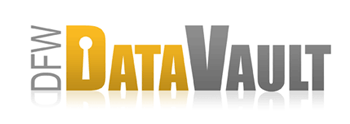Backing Up Very Large File Selections
Overview
If you have a large amount of data to back up to a remote location you can save save time and bandwidth when creating an initial backup. Start the backup locally (which is much faster than backing up over the Internet) and then perform subsequent backups to the remote location. This process is also known as “seeding your backup.”
Seeding your backup archive involves:
- Creating your backup archive locally
- Transporting (carry / drive / walk / ship) the backup archive to the remote location
- Attaching the backup archive to a remote destination
How It Works
Step 1: Create the Archive
- In CrashPlan on the source computer, choose Destinations > Folders.
- Select a location to which you want to back up.
- Click Start Backup.
CrashPlan creates your backup archive.
Step 2: Transport the Archive
It is important that you move / copy the entire folder that represents a computer's backup archives (the computer ID folder).
After backup is 100% is complete…
- On the Backup tab, pause the backup.
- If your folder is on an attached drive (i.e., USB, firewire, network), eject or unmount the drive.
- Bring (or copy) your archive over to the destination computer.
Step 3: Attach the Archive at the Remote Destination
On the remote destination computer, follow these instructions to attach an archive.
- Open the CrashPlan desktop and go to Backup > Backup Sources.
- Select Attach a backup archive (if you already have another source, click the triangle icon to open the menu.)
- Navigate to your archive.
Look for the folder that matches source computer's ID: e.g., 948212309528060501.
Note: If you don't have the Backup Sources section, go to Settings > Backup > Inbound backup from other computers and click the Enable inbound backup option.
Cross-Platform Considerations
If the source computer is a different platform from the destination computer (e.g. from Windows to Mac), you need to make sure both computers can read and write to the drive that holds your seeded archive. If you're working with a brand new external drive, in most cases, you don't need to do anything special prior to seeding, because most external drives from the factory can be accessed by Mac, Windows and Linux.
- Choose a file system that will work with both the source and destination's operating systems.
- Understand how file system limitations might affect your backup. For example, FAT 32 volumes are limited to 2 TB, but if your drive is smaller than that, this limitation will not be an issue.
- CrashPlan stores backup data in files of up to 4 GB.
